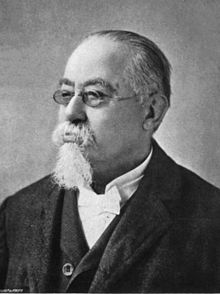Lombroso, Cesare

Cesare Lombroso (Verona, November 6th 1835 – Turin, October 19th 1909) was born into a fervently observant Jewish family. He graduated in Medicine in Pavia in 1858 with a dissertation on cretinism in Lombardy. After he obtained a degree in Surgery as well, he voluntarily enrolled in the army as medical officer and participated in the campaign against banditry in Calabria (1862).
The experience allowed him to indulge in his many and eclectic interests and make observations of medical, anthropologic and ethnologic nature.
The following year he reconnected with his contacts at Pavia University and in 1864 he obtained an official assignment to teach a course on Clinical mental illness and anthropology. In 1867 he was then made extraordinary professor of Clinical nervous and mental illnesses.
In December of 1870, while examining the skull of Giuseppe Villella, “a farmer suspected with banditry and sentenced three times for theft”, he noticed an “occipital median ditch” which was supposedly “housing a median lobe of the cerebellum”. Lombroso was convinced that this anomaly was not present in the skull of normal subjects, but only in “criminal individuals”. Thus criminal anthropology and atavism were born. According to Lombroso, delinquents (and, in smaller measure, alienated individuals) carried ancestral features. Criminal tendencies were therefore a natural occurrence since they appeared to be dependent on physically and psychologically inferior traits.
After a short stint at the direction of the local asylum S. Benedetto in Pesaro, he started feeling a growing uneasiness due to a widespread hostility that had taken place towards him at the University of Pavia; his studies on pellagra had in fact been cause for severe scientific controversy. He therefore moved to the University of Turin, where he eventually turned his private collections into a full-fledged museum.
